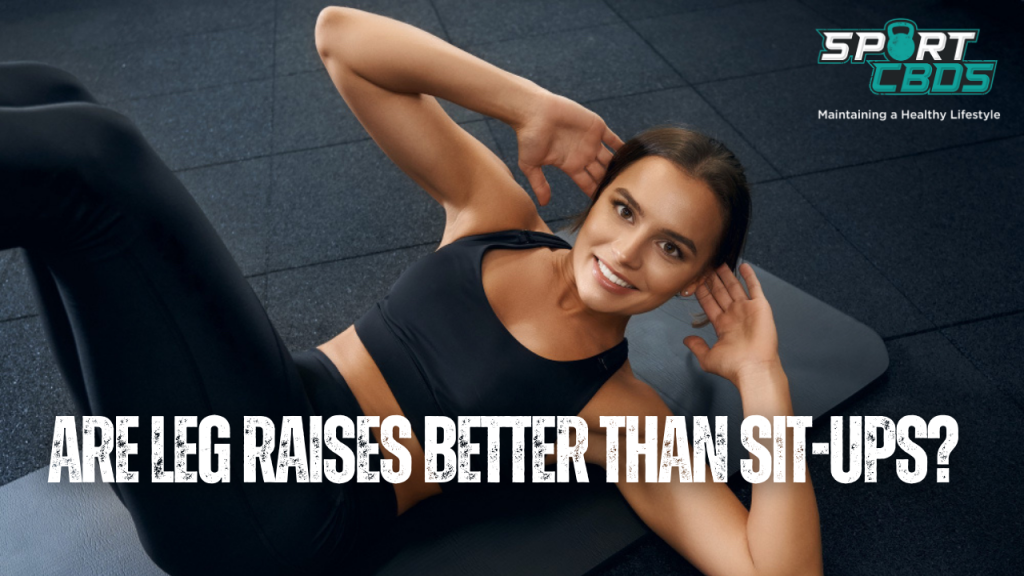
Why Do Shoulders and Chest Recover Faster Than Biceps and Triceps?
Ever noticed that after hitting the gym, your chest and shoulders seem to bounce back quicker than your biceps and triceps? It’s a curious difference in recovery time between these muscle groups that leaves many pondering the reasons.
It’s important to understand the reasons why, so that you can understand the process better to enable you to get more out of your workout sessions and make better progress.
In this post, we will delve into the fascinating world of muscle recovery science and examine the multitude of factors that affect how quickly distinct muscles recuperate following a workout session.
Why Do Shoulders and Chest Recover Faster Than Biceps and Triceps?
The recovery rate of shoulders and chest compared to biceps and triceps can be attributed to a combination of factors. The size and composition of muscle groups play a significant role, as larger muscle groups like the chest and shoulders possess more muscle fibres, allowing for more efficient repair and rebuilding after exercise. Additionally, these muscle groups have a higher proportion of slow-twitch fibres, which are better suited for recovery. The function and use of muscle groups also impact recovery rates, with chest and shoulders typically being used more frequently in day-to-day life and thus better adapted to handle stress. Exercise types, such as compound versus isolation exercises, can influence recovery as well, with compound exercises promoting a more significant anabolic response that aids in recovery. Other factors, including training principles, workout intensity and frequency, genetics, nutrition, and the importance of rest and sleep, all contribute to the faster recovery of shoulders and chest compared to biceps and triceps. By understanding these factors and optimising training and recovery strategies, individuals can maximise their muscle growth and overall fitness progress.
Size and Composition of Muscle Groups
A crucial aspect affecting muscle recovery is the size and composition of the muscle group being exercised. Generally, larger muscles, such as the chest and shoulders, recover more effectively than smaller ones like the biceps and triceps, due to the increased number of muscle fibres. This enables them to repair and rebuild efficiently post-workout.
Consider this basic analogy: a larger construction team working on a project will progress faster than a smaller one. A similar principle applies to muscle recovery. The larger the muscle group, the quicker it can repair and rebuild after exercising.
Muscle Fibre Types: Fast-Twitch vs. Slow-Twitch
Muscle recovery is also influenced by the muscle fibre types present in each muscle group. There are two main types: fast-twitch and slow-twitch fibres. Fast-twitch fibres are designed for explosive movements and tire more easily, while slow-twitch fibres are adapted for endurance activities and possess a higher recovery capacity.
Chest and shoulder muscles typically contain a higher percentage of slow-twitch fibres, while biceps and triceps contain more fast-twitch fibres. Consequently, after exercising, chest and shoulder muscles recover more rapidly due to their higher slow-twitch fibre content.
Function and Use of Different Muscle Groups
The primary function of each muscle group plays a part in recovery time as well. The chest and shoulders are mainly responsible for pushing and stabilising actions, while the biceps and triceps handle pulling and extending movements. In everyday life, we generally use our chest and shoulders more often than our biceps and triceps. As a result, these muscle groups are better equipped to manage stress and recover more rapidly.
The Impact of Exercise Type on Recovery: Compound vs. Isolation Exercises
The exercises you choose also impact muscle recovery rates. Compound exercises, like bench presses and shoulder presses, engage multiple muscle groups at once, while isolation exercises, like bicep curls and tricep extensions, focus on a single muscle group. Since compound exercises involve more muscles, they generally induce a more significant hormonal response, facilitating faster recovery.
Incorporating compound exercises into your workout routine can promote chest and shoulder recovery because these exercises trigger a more substantial anabolic response than isolation exercises.
Training Muscle Groups Together: Synergistic vs. Antagonistic
When planning your workout routine, it’s crucial to take into account the relationships among various muscle groups. Some muscles are synergistic, working in tandem to execute specific movements. For instance, chest and shoulder muscles cooperate during a bench press.
Conversely, certain muscle groups are antagonistic, as they perform opposing actions. Biceps and triceps exemplify this, as they carry out opposite functions (bending and extending the arm, respectively).
Training synergistic muscle groups together, such as chest and shoulders, results in a more effective workout that can encourage faster recovery. In contrast, exercising antagonistic muscle groups together, like biceps and triceps, may not yield the same advantages.

Training Principles for Different Muscle Sizes
Training principles tailored to different muscle sizes can also influence the recovery process. Larger muscles, such as the chest and shoulders, typically demand heavier loads and compound movements for effective training, while smaller muscles, like the biceps and triceps, might benefit more from lighter loads and isolation exercises.
For instance, when training chest and shoulder muscles with heavy compound movements, the body releases a wave of anabolic hormones, including testosterone and growth hormone, which aid muscle growth and recovery. In comparison, when exercising smaller muscle groups like biceps and triceps, the hormonal response is less pronounced, resulting in a slower recovery rate.
Related: What’s the best Shoulder Press to Bench Press Ratio?
Intensity and Frequency of Workouts
Your workouts’ intensity and frequency can also affect muscle recovery rates. Training with high intensity and volume leads to more muscle damage, necessitating a longer recovery period. Conversely, exercising with lower intensity and volume allows muscles to recover faster.
Moreover, the frequency with which you exercise each muscle group can impact recovery. Constantly working the same muscles might not provide enough time for complete recovery. It’s vital to find the right balance between training intensity, volume, and frequency to facilitate optimal muscle recovery and growth.
Volume, Overtraining, and Recovery
Overtraining can significantly influence muscle recovery. Exceeding your body’s limits can hinder the recovery process, resulting in stalled or even regressed training progress. It’s essential to keep an eye on your training volume and avoid overexerting specific muscle groups, especially smaller muscles like biceps and triceps.
Make sure to include enough rest days and apply appropriate periodization techniques, which consist of adjusting training volume, intensity, and exercise selection over time to foster optimal muscle recovery and growth.
The Role of Genetics in Muscle Recovery
Genetics can influence the speed at which your muscles recover following a workout. Some individuals are naturally inclined towards quicker recovery, while others may need more time to recuperate after exercise. Genetic factors can affect your distribution of muscle fibre types, hormone levels, and overall recovery ability.
Although you can’t alter your genetics, understanding your body’s specific needs can help you create a training program that encourages optimal recovery and growth.
Nutrition and Supplementation for Optimal Recovery
Proper nutrition is vital for muscle recovery. Consuming sufficient protein, carbohydrates, and healthy fats assists in repairing muscle tissue, replenishing glycogen stores, and reducing inflammation. Additionally, maintaining proper hydration and consuming essential micronutrients, such as vitamins and minerals, can support the recovery process.
Supplementation can further aid muscle recovery. Popular recovery supplements include branched-chain amino acids (BCAAs), creatine, glutamine, and omega-3 fatty acids. These supplements can help alleviate muscle soreness, facilitate muscle repair, and enhance overall recovery.
Importance of Rest and Sleep for Muscle Recovery
Rest and sleep are critical for muscle recovery. Your body releases growth hormone during sleep, which is essential for muscle repair and growth. Strive for 7-9 hours of quality sleep each night to ensure your body has ample time to recover and rebuild after exercising.
Individual Variation and Factors Affecting Recovery Rate
It’s crucial to recognize that everyone’s body is unique, and numerous factors can influence muscle recovery rates. Aspects such as age, training experience, stress levels, and overall health can all affect the speed at which your muscles recover after exercise.
To maximise your recovery, be attentive to your body’s specific needs and modify your training program, nutrition, and sleep habits accordingly.
Related: When To Switch From Strength To Hypertrophy
FAQs
Which muscles recover the fastest?
Larger muscle groups, such as the chest and shoulders, tend to recover faster than smaller muscle groups like the biceps and triceps. This is due to factors like muscle size and composition, muscle fiber types, and the frequency of use in daily activities.
Why do some muscles recover faster than others?
Some muscles recover faster than others because of differences in muscle size and composition, fiber type distribution, function and use, exercise type, and genetic factors. Larger muscles with a higher proportion of slow-twitch fibers generally recover faster than smaller muscles with a higher proportion of fast-twitch fibers.
Do biceps and triceps recover quickly?
Biceps and triceps tend to recover more slowly than larger muscle groups like the chest and shoulders. This is due to their smaller size, higher proportion of fast-twitch fibers, and the fact that they are typically trained with isolation exercises, which may not stimulate as strong a hormonal response for recovery.
Do triceps recover faster than other muscles?
Triceps do not generally recover faster than other muscles. In fact, they tend to recover more slowly than larger muscle groups like the chest and shoulders, primarily due to their smaller size and higher proportion of fast-twitch fibers.
Do triceps take longer to recover?
Yes, triceps often take longer to recover than larger muscle groups like the chest and shoulders. This is because triceps are a smaller muscle group with a higher proportion of fast-twitch fibers, making them more susceptible to fatigue and slower to recover.
Are triceps the hardest muscle to grow?
Triceps are not necessarily the hardest muscle to grow, but they can be challenging to develop due to their smaller size, higher proportion of fast-twitch fibers, and the fact that they are often trained with isolation exercises. To promote triceps growth, it’s essential to incorporate compound exercises, like close-grip bench presses and dips, and to pay attention to proper training volume, intensity, and recovery.
Final thoughts…
Various factors contribute to the quicker recovery of shoulders and chest compared to biceps and triceps. Factors including muscle size and composition, muscle fibre types, the function and use of different muscle groups, the exercises performed, training principles, workout intensity and frequency, training volume, genetics, nutrition, and the importance of rest and sleep all determine the rate at which different muscles recover.
By comprehending these factors and employing strategies to optimise recovery, you can help ensure that your muscles recuperate efficiently, enabling you to make the most of your workouts and achieve consistent progress in your fitness journey. Keep in mind that everyone’s body is unique, and what works for one person might not work for another. Pay attention to your body and make adjustments as necessary to find the optimal balance for your individual needs.
Which of your body parts recover faster than others and have these tips helped? Let us know in the comments below.
If you enjoy sport and use CBD to help with your recovery in between gruelling workouts, then you are in the right place. Here at Sport CBDs, we train hard and recover the best way possible…
We have regular workouts (check out the YouTube channel), CBD news and CBD products to help you gain that edge!
If you wanted to check out the reputable CBD we have on offer here at the site, then please head to the Sport CBDs Store (CLICK HERE). We also do fitness clothing and yoga accessories too.
Until next time, all the best…
Lee
Founder – Sport CBDs
Featured Image Attribution – Image by drobotdean on Freepik


